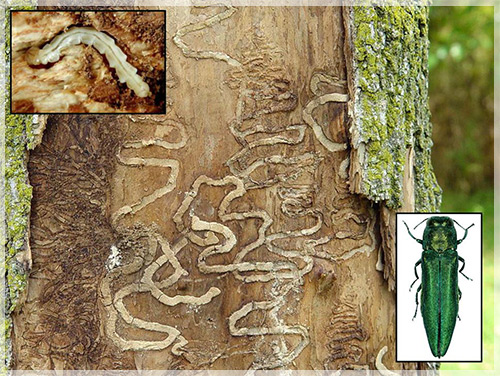
The Emerald Ash Borer (EAB) (Agrilus planipennis) is an invasive beetle native to northeastern Asia that poses a significant threat to ash trees (Fraxinus species) across North America. Since its detection in the United States in 2002, EAB has been responsible for the death of tens of millions of ash trees, with the potential to decimate nearly all ash populations in affected regions.
Source: wikipedia.org
In Vermont, ash trees constitute about 5% of the state's forests. The arrival of EAB in 2018 signaled a severe threat to these trees. The larvae of EAB feed on the inner bark of ash trees, disrupting the flow of water and nutrients, which typically results in the death of the tree. This infestation not only diminishes forest biodiversity but also affects wildlife habitats and the ecological balance.
Current Efforts and Hope for the Future
Despite the grim outlook, there is hope. Some ash trees, known as "lingering ash," have demonstrated resistance to EAB. Identifying and studying these trees are crucial steps toward developing resistant ash populations for future reforestation efforts.
Additionally, biological control measures are being explored. The introduction of natural predators, such as certain parasitic wasps, aims to manage EAB populations and mitigate their impact on ash trees.
By taking these actions, we can collectively work towards preserving Vermont's ash trees and maintaining the health of our forests.